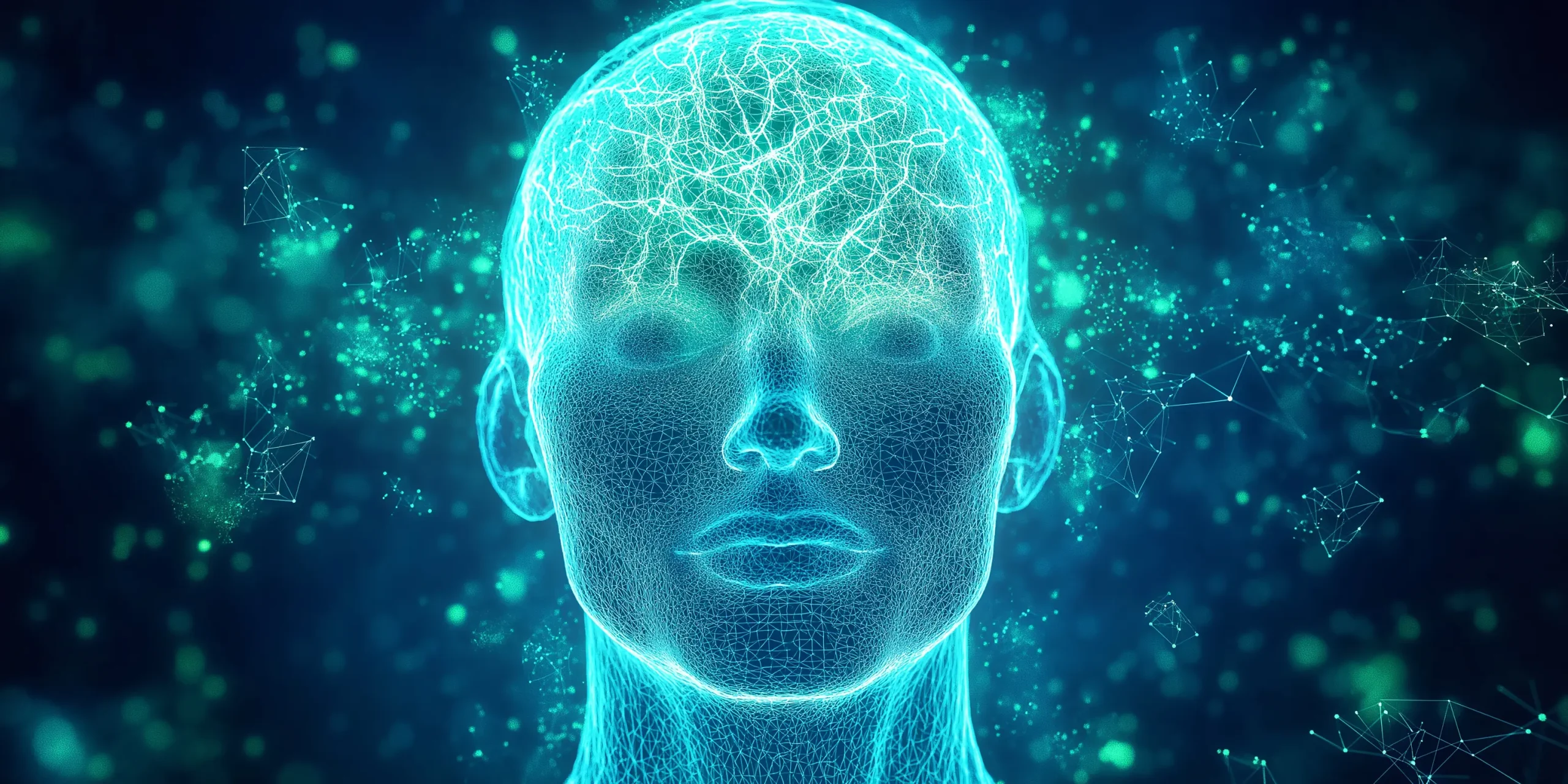PTBS
Leiden Sie unter PTBS, die Ihren Alltag beeinträchtigt und konventionelle Therapien bringen keine Linderung? Die Posttraumatische Belastungsstörung (PTBS) stellt Betroffene im Alltag vor große Herausforderungen. Medizinisches Cannabis wird zunehmend als unterstützende Behandlung erforscht und eingesetzt. Es kann eine alternative Möglichkeit bieten, Symptome von PTBS zu lindern – besonders dort, wo klassische Therapien nicht den gewünschten Erfolg bringen.Posttraumatische Belastungsstörung kurz erklärt
Es gibt keine speziellen genetischen oder gesundheitlichen Voraussetzungen, die das Auftreten einer PTBS begünstigen. Auch psychisch stabile Menschen können nach einem Trauma betroffen sein³.
- Wiederholte Traumatisierung, z. B. durch Vernachlässigung in der Kindheit oder Missbrauch, kann zur komplexen PTBS führen⁴.
- Traumata durch menschliches Handeln (z. B. Gewaltverbrechen) führen häufig zu schwereren Verläufen als Naturkatastrophen³.
- Auch Ersthelfer oder Augenzeugen können betroffen sein.
PTBS Symptome
Die PTBS Symptome treten meist nicht sofort nach der traumatischen Situation auf. Im Vordergrund stehen in der Regel Symptome des Schocks. Betroffene fühlen sich wie betäubt und berichten von dem Gefühl des Nebensichstehens sowie dem Empfinden, dass ihnen alles irreal vorkommt. Dies ist ein Schutzmechanismus des Körpers und dient dem eigenen Überleben5. Nach dieser akuten Belastungsreaktion entwickeln sich die Symptome weiter und manifestieren sich. Dabei können die PTBS Symptome auch erst Monate bis Jahre nach dem eigentlichen Ereignis auftreten5.
Die Hauptsymptome einer posttraumatischen Belastungsstörung sind5,8:
- Flashbacks:
Spontan auftretende Erinnerungen an das Trauma können sehr belastend sein. Bei einigen kommen die Erinnerungen nur bruchstückhaft hoch, andere wiederum fühlen sich zurückversetzt und durchleben die Ereignisse noch einmal. Die Auslöser (Trigger) für Flashbacks können verschiedene Reize, wie zum Beispiel Geräusche, Gerüche, Orte, Personen etc. sein. Zusätzlich zu den Flashbacks kommen meist noch massive Angst sowie körperliche Beschwerden (z. B. Herzrasen, Atemnot, Schweißausbrüche, Schwindel und Zittern) hinzu. - Vermeidung:
Viele betroffene Menschen versuchen, die Trigger zu vermeiden, da das Wiedererleben der Situationen psychisch sehr belastend ist. Hat jemand beispielsweise ein Trauma infolge eines schweren Verkehrsunfalles erlebt, so vermeidet er vielleicht das Autofahren und öffentliche Verkehrsmittel. Problematisch ist, dass sich die bewusste Vermeidung kontraproduktiv auswirkt und die Angst sowie weitere Symptome verstärkt. - Vegetative:
Übererregung und Ängste: Nach einem erlebten Trauma entwickeln die meisten Menschen starke Ängste und sind in der Folge äußerst schreckhaft. Für die Gesundheit ist dieser erhöhte Stresspegel belastend. Außerdem führt die permanente Anspannung nicht selten zu einer leichten oder starken Reizbarkeit. Auch unverhältnismäßige Wutausbrüche können auftreten, ebenso Ein- und Durchschlafstörungen. - Interessenverlust:
Die Erfahrungen, die während der belastenden Ereignisse gemacht wurden, führen häufig dazu, dass sich Menschen vom sozialen Leben zurückziehen und auch das Interesse daran verlieren.
Wie Cannabinoid-Therapie PTBS-Symptome lindern kann
Auch wenn sich die Forschung zu medizinischem Cannabis noch in einem frühen Stadium befindet, zeigen erste empirische Daten vielversprechende Ergebnisse². Cannabinoide interagieren mit dem Endocannabinoid-System des Körpers, was zu einer therapeutischen Wirkung führen kann. Dies kann helfen, belastende Gedankenschleifen und Flashbacks zu reduzieren, die Schlafqualität zu verbessern und eine stabilere Basis für den Alltag sowie für psychologische Therapien zu schaffen. Eine Heilung ist nicht möglich, aber viele Betroffene berichten über eine deutlich gesteigerte Lebensqualität.
Die PTBS ist eine spezielle Form der Traumafolgeerkrankung und eine schwere psychische Erkrankung. Betroffene benötigen eine traumaspezifische Psychotherapie¹. Begleitend kann es notwendig sein, medikamentöse Unterstützung einzusetzen.
Die Erkrankung kann nach traumatischen Ereignissen auftreten – etwa durch schwere Unfälle, Kriegserfahrungen, Naturkatastrophen oder erlebte physische, psychische oder sexuelle Gewalt sowie Vernachlässigung³.

Cannabinoid-Therapie bei PTBS im Überblick:
Bei Canify clinics erhalten Sie Zugang zu spezialisierten Ärzten und Psychotherapeuten, die Erfahrung in der Behandlung mit medizinischem Cannabis haben. Unser Ziel ist es, Ihre Lebensqualität zu verbessern und die Behandlungen nahtlos in Ihren Alltag zu integrieren.
Um Ihnen den Einstieg zu erleichtern, bieten wir auch Online-Termine an, sodass Sie schnell und unkompliziert mit Ihrer Therapie beginnen können. Wir unterstützen Sie dabei, Ihren Herausforderungen wirksam zu begegnen und Ihrem Ziel einer besseren Lebensqualität näher zu kommen.
Mehr Lebensqualität bei PTBS dank Cannabis?
Die posttraumatische Belastungsstörung ist eine psychische Erkrankung, bei der die Traumatherapie Priorität haben muss. Therapien mit Medikamenten und auch mit medizinischem Cannabis können lediglich unterstützend eingesetzt werden.
Medizinisches Cannabis bei PTBS: Was sagt die Wissenschaft?
Studien, die Cannabis bei PTBS-Symptomen unterstützen, sind noch sehr vorläufig. Dennoch medikamentieren sich viele PTBS-Patient*innen mit Cannabis selbst, um damit Symptome wie etwa Angstzustände zu lindern.11
Dieses Vorgehen wird auch durch Tierstudien gestützt: Wenn die Tiere THC bekommen haben, haben sie sich weniger ängstlich verhalten. Wird hingegen der Cannabinoidrezeptor CB1 blockiert, wird ein verstärktes angstbezogenes Verhalten beobachtet, was auf die Rolle der Cannabinoide bei der Kontrolle von Angst und Furcht hinweist11.
Wie kann Medizinisches Cannabis helfen?
Die Amygdala, eine Region im Gehirn, ist an der Verarbeitung von Bedrohungen und der Erzeugung von Angstreaktionen beteiligt und ist bei PTBS als Reaktion auf traumabezogene Reize hyperaktiv. Das macht es schwierig, die Aufmerksamkeit und die Reaktionen auf diese Reize zu unterdrücken. In der Amydala ist der Cannabinoidrezeptor CB1 besonders häufig vorhanden, und es hat sich gezeigt, dass THC die Aktivität dieser Gehirnregion beeinflusst. Interessanterweise ist die Wirkung von THC jedoch dosisabhängig: Niedrige Dosen scheinen die Aktivität der Amygdala zu verringern (anxiolytisch), hohe Dosen erhöhen die Aktivität (anxiogen)11.
Weitere häufige PTBS-Symptome sind Schlaflosigkeit und Albträume. Kleine Studien mit THC (Dronabinol und Nabilon) haben positive Auswirkungen auf diese Symptome bei PTBS-Patienten gezeigt11,12,13.
Insgesamt sind weitere Studien erforderlich, um vollständig zu klären, wie Cannabis die PTBS-Symptome lindern kann. Vorläufige und empirische Daten deuten jedoch darauf hin, dass Cannabis tatsächlich eine hilfreiche Erleichterung für diese Patienten sein könnte.
Online-Therapie bei spezialisierten Ärzten
Starten Sie Ihre Cannabinoid-Therapie bequem von zu Hause aus. Im digitalen Erstgespräch werden Sie direkt mit medizinischem Fachpersonal verbunden. Die Folgetermine finden per Videosprechstunde statt – ortsunabhängig und flexibel.
PTBS – Behandlung und Therapie
Bei psychischen Erkrankungen wie der posttraumatischen Belastungsstörung (PTBS) ist eine umfangreiche Behandlung, die möglichst frühzeitig beginnt, besonders wichtig.6 Häufig ist eine ambulante Therapie ausreichend, ein Klinikaufenthalt kann unter bestimmten Voraussetzungen hilfreich sein, vor allem auch bei schwerer Ausprägung der PTBS oder wenn es weitere Störungen gibt wie eine schwere Depression, Suizidgefahr oder psychotische Symptome.
Zu Beginn der Behandlung werden Betroffene, und wenn möglich nahestehende Personen, zum Thema PTBS und den Behandlungsmöglichkeiten umfangreich aufgeklärt. Anschließend wird dann ein geeignetes Behandlungskonzept erarbeitet. Ziel ist es, Betroffenen dabei zu helfen, die ungewollt auftretenden Erinnerungen zu kontrollieren sowie die Fähigkeit zu entwickeln, das Trauma in die Lebensgeschichte zu integrieren, die Symptome zu lindern und die Lebensqualität wiederherzustellen.7
Am häufigsten wird die kognitive Verhaltenstherapie angewendet, bei der Betroffene lernen, ihre Gefühle, Verhaltensweisen und auch das Erlebte wahrzunehmen und neu zu bewerten. Auch die Psychotherapie, genauer gesagt die psychodynamische Therapie, kann eine Option sein. Patienten setzen sich hier schrittweise mit dem Erlebten auseinander9,10.
Medikamentöse Unterstützung bei PTBS
Ob Medikamente wie Antidepressiva eine Hilfe bei der Behandlung einer posttraumatischen Belastungsstörung sind, ist umstritten. Gemäß der Leitlinien der Deutschsprachigen Gesellschaft für Psychotraumatologie (DeGPT) sollen Medikamente weder als alleinige noch als primäre Therapie der PTBS eingesetzt werden, da die Effekte zu gering seien. Vielmehr sollte die Psychotherapie bzw. Traumatherapie stets im Vordergrund stehen. Lediglich zur Unterstützung werden in schweren Fällen Medikamente wie Sertralin oder Paroextin empfohlen1,9.
Können Ärzte Cannabis bei PTBS verschreiben?
Ja. Auch nach der Teillegalisierung von Cannabis in Deutschland bleibt medizinisches Cannabis weiterhin verschreibungspflichtig. Ärztinnen und Ärzte aller Fachrichtungen (außer Zahn- und Tierärzte) dürfen es unter bestimmten Voraussetzungen verordnen. Voraussetzung ist das Vorliegen einer schwerwiegenden Erkrankung – etwa PTBS – und die begründete Annahme, dass sich die Symptomatik durch den Einsatz von medizinischem Cannabis verbessern lässt. Die Behandlung erfolgt weiterhin im Rahmen einer ärztlich begleiteten Therapie und erfordert eine individuelle Verordnung auf Rezept.
Häufig gestellte Fragen
Was ist eine posttraumatische Belastungsstörung (PTBS)?
Die posttraumatische Belastungsstörung (PTBS) ist eine schwere psychische Erkrankung, die nach dem Erleben von extrem belastenden oder lebensbedrohlichen Ereignissen entstehen kann. Typisch sind Flashbacks, Vermeidungsverhalten, Übererregung und häufig auch Schlafstörungen1,3.
Welche Symptome treten bei PTBS häufig auf?
Typische Symptome sind Flashbacks, Angstzustände, Vermeidungsverhalten, Übererregung, Schlafstörungen, Albträume, Konzentrationsprobleme sowie sozialer Rückzug und Interessenverlust5,8.
Wie kann medizinisches Cannabis bei PTBS helfen?
Medizinisches Cannabis kann durch seine Wirkung auf das Endocannabinoid-System dazu beitragen, Flashbacks, Angst, Schlaflosigkeit und Albträume zu reduzieren. Viele Betroffene berichten von einer verbesserten Lebensqualität und mehr innerer Stabilität2,11,12,13.
Welche Wirkung haben Cannabinoide bei PTBS?
Cannabinoide wie THC und CBD beeinflussen die Aktivität von Gehirnregionen, die für Angst und Stress zuständig sind. Studien zeigen, dass niedrige Dosen von THC die Übererregung dämpfen und die Schlafqualität verbessern können11,12.
Gibt es Studien zur Wirksamkeit von Cannabis bei PTBS?
Erste empirische Studien und Tiermodelle zeigen, dass Cannabis eine positive Wirkung auf PTBS-Symptome haben kann. Insbesondere die Reduktion von Flashbacks, Albträumen und Ängsten wurde mehrfach beobachtet2,11,12,13. Mehr zur Studienlage
Wann ist eine Cannabis-Therapie bei PTBS sinnvoll?
Medizinisches Cannabis kommt insbesondere dann zum Einsatz, wenn klassische Therapien wie Psychotherapie oder Medikamente nicht ausreichend wirken oder starke Nebenwirkungen verursachen. Die Entscheidung erfolgt immer individuell nach ärztlicher Prüfung1,9.
Was sind die Vorteile von medizinischem Cannabis im Vergleich zu klassischen Medikamenten bei PTBS?
Cannabis wirkt häufig schneller, kann mehrere Symptome gleichzeitig adressieren und wird von vielen Patienten besser vertragen als klassische Antidepressiva oder Beruhigungsmittel. Es kann ergänzend zur Psychotherapie eingesetzt werden2,11.
Welche Nebenwirkungen können bei einer Cannabis-Therapie auftreten?
Mögliche Nebenwirkungen sind Mundtrockenheit, Schwindel, leichte Müdigkeit oder Konzentrationsprobleme. Die meisten Nebenwirkungen sind mild und lassen sich durch individuelle Dosierung reduzieren11,13.
Welche Rolle spielt das Endocannabinoid-System bei PTBS?
Das Endocannabinoid-System ist an der Regulation von Angst, Stress, Erinnerungen und Schlaf beteiligt. Bei PTBS kann eine Dysregulation dieses Systems vorliegen. Cannabinoide unterstützen das Gleichgewicht und lindern so typische Symptome2,11.
Wie läuft die Therapie mit Cannabis bei PTBS ab?
Nach einer ausführlichen Diagnostik und Aufklärung legt der Arzt die passende Cannabissorte und Dosierung fest. Die Therapie erfolgt unter ärztlicher Kontrolle, häufig in Kombination mit Psychotherapie. Bei Canify Clinics ist die Betreuung auch per Videosprechstunde möglich. Mehr zum Ablauf
Wer darf medizinisches Cannabis bei PTBS verschreiben?
Seit dem Medizinal-Cannabisgesetz dürfen alle approbierten Ärzte – außer Zahn- und Tierärzten – medizinisches Cannabis bei PTBS verordnen, wenn eine entsprechende Indikation vorliegt11.
Übernimmt die Krankenkasse die Kosten für Cannabis bei PTBS?
Die Kosten für medizinisches Cannabis werden von der gesetzlichen Krankenkasse übernommen, wenn andere Therapien nicht ausreichend wirken und eine schwerwiegende Erkrankung wie PTBS vorliegt. Voraussetzung ist eine ärztliche Verordnung11. Mehr zur Kostenübernahme
Gibt es Wechselwirkungen mit anderen Medikamenten?
Wechselwirkungen mit Antidepressiva, Beruhigungsmitteln oder Neuroleptika sind möglich. Die Therapie mit Cannabis sollte daher immer ärztlich begleitet werden11.
Ist eine Heilung von PTBS durch Cannabis möglich?
Cannabis kann die Symptome von PTBS lindern, aber keine Heilung bewirken. Im Vordergrund steht immer die psychotherapeutische Traumabehandlung. Cannabis wird als unterstützende Therapie eingesetzt1,9.
Was ist bei der Kombination von Cannabis und Psychotherapie zu beachten?
Die Kombination kann besonders wirksam sein, da Cannabis Symptome wie Angst und Schlaflosigkeit mindern und damit die Psychotherapie erleichtern kann. Die Therapie sollte jedoch stets von erfahrenen Fachärzten begleitet werden9.
Welche Risiken und Kontraindikationen bestehen für Cannabis bei PTBS?
Bei schweren psychiatrischen Störungen, Psychosen, bekannten Unverträglichkeiten oder Suchtproblemen sollte Cannabis nicht angewendet werden. Eine individuelle ärztliche Abklärung ist notwendig11.
Wie wird PTBS diagnostiziert?
Die Diagnose erfolgt durch spezialisierte Ärzte oder Psychotherapeuten anhand internationaler Kriterien (z. B. ICD-10, ICD-11, DSM-5) und spezieller Testverfahren wie der Clinician-Administered PTSD Scale (CAPS)7,8.
Was ist komplexe PTBS und gibt es Unterschiede zur „normalen“ PTBS?
Komplexe PTBS tritt meist nach wiederholten oder lang andauernden Traumatisierungen auf und geht mit zusätzlichen Symptomen wie schweren Persönlichkeitsveränderungen, Dissoziation und Bindungsproblemen einher. Die Therapie ist oft langwieriger4.
Wie kann ich bei Canify Clinics eine Cannabis-Therapie bei PTBS starten?
Sie können online einen Termin vereinbaren und werden durch erfahrene Fachärzte individuell beraten. Die Therapie kann flexibel per Videosprechstunde von zu Hause aus begonnen werden. Jetzt Beratung buchen
Welche alternativen Therapien werden bei PTBS eingesetzt?
Zu den wichtigsten Therapien zählen die kognitive Verhaltenstherapie, psychodynamische Verfahren, EMDR, sowie – in schweren Fällen – unterstützende Medikamente wie Antidepressiva. Die psychotherapeutische Behandlung steht immer im Vordergrund1,9,10.
Quellenangaben
- Schäfer, I., et al. POSTTRAUMATISCHE BELASTUNGSSTÖRUNG. SPRINGER VERLAG, BERLIN, (2019).
- Bilbao, A. & Spanagel, R. Medical cannabinoids: a pharmacology-based systematic review and meta-analysis for all relevant medical indications. BMC Med 20, (2022).
- Charité Universitätsmedizin Berlin; “Posttraumatische Belastungsstörungen (PTBS): Klinik für Psychiatrie und Psychotherapie | CBF – Charité”
- Deutschsprachige Gesellschaft für Psychotraumatologie, DeGPT, „Komplexe posttraumatische Belastungsstörung“
- Ärztliches Zentrum für Qualität in der Medizin (ÄZQ), Berlin, patienten-information.de, „Posttraumatische Belastungsstörung – immer wieder schlimme Erinnerungen“
- ZEP Zentrum für Psychotraumatologie Hamburg, „PTBS Diagnostik“
- Universitätsklinikum Ulm, „Clinician-Administered PTSD Scale (CAPS)“
- Dreßing, H. R. & Foerster, K. Diagnostic Criteria of PTSD in ICD10, ICD-11 and DSM 5: Relevance for expert opinion. Fortschritte der Neurologie Psychiatrie 1 89, 578–592 (2021).
- Institut für Qualität und Wirtschaftlichkeit im Gesundheitswesen (IQWiG), gesundheitsinformationen.de, „Psychotherapie und ergänzende Behandlungen bei einer posttraumatischen Belastungsstörung“
- Neurologen und Psychiater im Netz, Prof. Dr. med Ulrich Schnyder, „Posttraumatische Belastungsstörung – Therapie“
- Rabinak, C. A. et al. Cannabinoid modulation of corticolimbic activation to threat in trauma-exposed adults: a preliminary study. HHS Public Access. Psychopharmacology (Berl) 237, 1813–1826 (2020).
- Jetly, R., Heber, A., Fraser, G. & Boisvert, D. The efficacy of nabilone, a synthetic cannabinoid, in the treatment of PTSD-associated nightmares: A preliminary randomized, double-blind, placebo-controlled cross-over design study. Psychoneuroendocrinology 51, 585–588 (2015).
- Cameron, C., Watson, D. & Robinson, J. Use of a synthetic cannabinoid in a correctional population for posttraumatic stress disorder-related insomnia and nightmares, chronic pain, harm reduction, and other indications: a retrospective evaluation. J Clin Psychopharmacol 34, 559–564 (2014).





